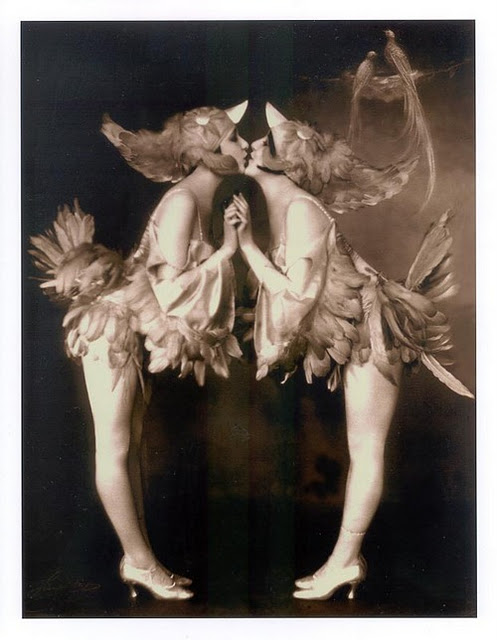Retro Fetish: John Willie and the Bizarre
To accompany this blog post I got together with this era's own Sweet Gwendoline, Miss Miranda for a 50's fetish inspired photoshoot! Images (exluding Bizarre artwork) ©Anna Swiczeniuk

John Alexander Scott Coutts, also known as John Willie (slang for penis, as if you couldn't guess) was often described as the Leonardo Da Vinci of fetish, famous for producing 1950s magazine Bizarre.
Born on 9th December 1902 in Singapore to British parents, the family moved back to England shortly after. In 1923 at the age of 18, he joined the British Army. Two years later he rose to the rank of Second Lieutenant of the Royal Scots, but was forced to leave in 1925 when he married nightclub hostess Evelyn Fisher, without permission.
Coutts moved to Australia but unfortunately the marriage ended in divorce only 5 years later. This gave him the time to work for a Sydney-based fetish club as an illustrator and photographer, and he soon became involved with one of his models, Holly Faram. They married in 1942 and moved in together; it is said that when friends visited his apartment they were greeted with a black-and-white photo of Holly, naked and tied to a tree.

Miss Miranda wearing our Oh You Tease! set, arriving in October.
In around 1945-47, Coutts moved to New York City, while Holly chose to remain in Australia, however they remained married. This is when Coutts adopted the name John Willie and started producing Bizarre Magazine (no, not the current one of the same name).
The original Bizarre Magazine was sold via mail order to private consumers, and comprised of fetish-themed photographs (often of his wife), stories and hand-drawn illustrations, all created by Coutts and sometimes a guest contributor. Readers sent letters in covering themes such as bondage, amputee fetishism, transvestism, corsets and more.
It was Coutts' artwork that really set the magazine apart, and secured his place in the fetish hall of fame. Using models or photographs taken himself, he drew in an anatomically correct style, using different techniques for different characters. His heroines, such as his best known character Sweet Gwendoline, were drawn in a smooth form, whereas crosshatching and pen marks characterised his villains.
Miranda wearing our Dominique set and some delicious Fabulously Fetish boots!
Other characters that frequented Bizarre included a dominatrix known as U69 (sometimes censored to U89) and the only prominent male character in the series, Sir Dystic D'Arcy, who was a parody of Coutts himself.
The comics were underscored with classic slapstick comedy, and used innuendos instead of explicit sexual depictions. Each episode featured Gwendoline foiling the plans of D'Arcy, resulting in her being restrained in complicated rope bondage for the majority of the story. It was obvious that Coutts genuinely liked women, as his female characters were always portrayed as intelligent, and his males as dimwitted muscle.
Miss Miranda wearing our Dominique corset
The art of John Willie influenced later artists, including ENEG and Eric Stanton, with the latter later creating his own version of Sweet Gwendoline, signing his name J.W. Stanton (for "John Willie") in tribute.
Although Coutts was friends with Stanton, their publicist Irving Klaw did not approve of his artists fraternising.
|
|
If the name Irving Klaw rings a bell, I'm not surprised. He was one of the first fetish photographers and filmmakers, and the one who "discovered" Bettie Page. Klaw began his career selling second-hand magazines, which soon moved onto operating a mail order business selling cheesecake photos of movie stars. Customers began to request more "damsel-in-distress" bondage photographs, which he and his sister Paula began to take themselves using burlesque artists.
Although still controversial, Klaw was extremely careful that none of his images contained sexual acts or nudity, which would render his business illegal. As the Bizarre Magazine publisher he also asked Coutts to sensor some of his work, feeling that it would be too extreme for some.

In 1957 after 20 issues, Bizarre Magazine was either given or sold to Coutts' secretary and her then boyfriend, although it is said he was never happy with how they ran it. Coutts moved to Hollywood and sadly developed a brain tumour in 1961, which forced him to return to England.
It is said he died bitter and penniless, and destroyed his archives in anger. On the 5th August 1962 he died in his sleep.

"I've tried a corset on myself and it was nothing else but damned uncomfortable. It gives a women a beautiful shape which I like but I shall get double pleasure out of using it as an 'instrument of correction'...I don't like extreme cruelty, I simply apply as much as is needed to correct disobedience."
- John Alexander Scott Coutts a.k.a John Willie
 1940s,
1940s,  1950s,
1950s,  50s,
50s,  Irving Klaw,
Irving Klaw,  bettie page,
bettie page,  bizarre magazine,
bizarre magazine,  fetish,
fetish,  magazine,
magazine,  miss miranda,
miss miranda,  photoshoot
photoshoot 



























